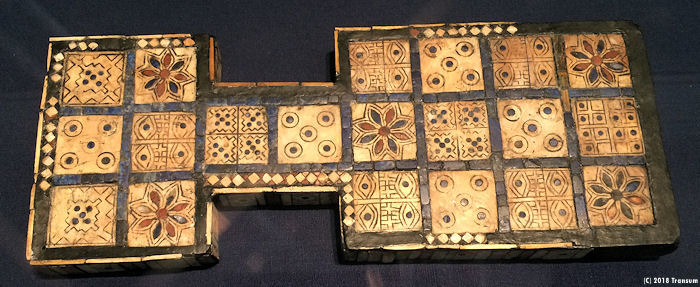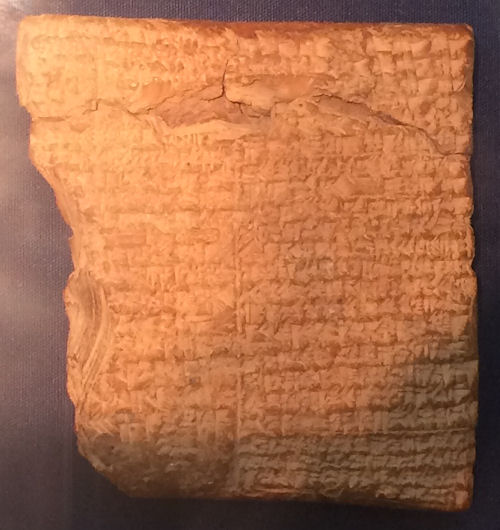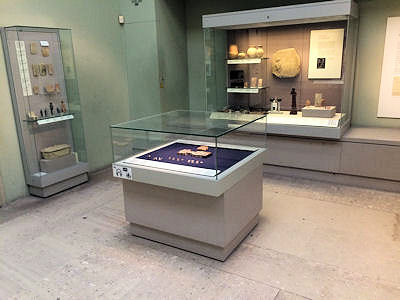|
|
Above are a selection of games, some old, some new, which have provided countless hours of pleasure for people all over the world. For each of them there are strategies for playing the game to beat your opponent. Click on one of the pictures above to find out more about the games. It is only when you start playing the games that the strategies become evident.
One excellent game suitable for pupils of a wide range of ages is called Remainder Race. It is very effective as an alternative method of practising basic numeracy skills but it also lends itself to strategy development.
This game is an adaption of The Royal Game of UR which gets its name from two game boards which were found in tombs in Iraq by Sir Leonard Wooley, who was carrying out excavations in the ancient city of Ur in the 1920s. The two boards date from before 2600 BC.

A Babylonian tablet written in the ancient cuneiform language describing the game was discovered by Irving Finkel, a curator at the British Museum in London. The tablet dates from 177-176 BC.

The game board and the instructions on the Babylonian tablet are displayed in this cabinet in gallery 56 of the museum.

There are a couple of other board games derived from the Royal Game of Ur on display at the British Museum in London. Here is an ivory senet board with a drawer for storing the glazed gaming pieces.
The photograph below shows another variation of the game. The British Museum describe the item as follows: Ivory gaming box, 1250—1050 BC. This ivory gaming box was used to play a game similar to the Egyptian 'Game of Twenty Squares'. Board games on Cyprus were enjoyed by all classes, and crossed cultural boundaries. The box was buried with a wealthy inhabitant of a major trading and manufacturing town near Enkomi in eastern Cyprus. The carving style is a mix of Canaanite, Egyptian and Aegean motifs, showing the cosmopolitan nature of Cypriot society at this time.
Transum's Remainder Race differs from The Royal Game of UR in a number of important ways. Determining the number of squares to be moved as being the remainder of a division calculation is specifically included as a required skill for this educational activity. Although the game board is the same shape as the ancient version, requiring the exact number to finish the game is not a feature of this version.
You might also be interested in our Maths Games.
Another item on display at the British Museum is this black-figured amphora (storage-jar) showing Ajax and Achilles playing a game resembling backgammon. The jar is Greek and made in Athens around 520 BC.
Games were popular with Egyptian kings around 3000 BC. First Dynasty kings were buried at Abydos with everything needed to make their huge tombs luxurious palaces for eternity. This limestone board, carved in the shape of a coiled serpent, was for playing mehen, the snake game. Two teams, with up to six players, raced marbles around the snake from tail to head and back again. From a tomb painting, we know the game also involved ivory figurines of lions. Many were found with retainers buried near the king, and might mark their owners as favoured gaming partners. Playing mehen was not merely entertainment: victory at the game symbolised success in the afterlife.
Do you have any comments? It is always useful to receive feedback and helps make this free resource even more useful for those learning Mathematics anywhere in the world. Click here to enter your comments.